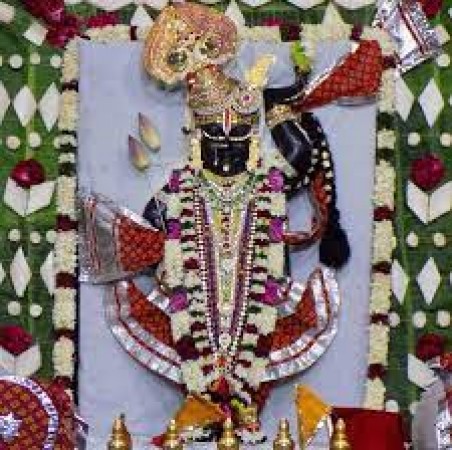
The Shrinathji Temple in Nathdwara, located in the state of Rajasthan, India, is a renowned pilgrimage site that attracts devotees from far and wide. Nestled amidst the Aravalli hills, this temple holds immense religious significance and is dedicated to Lord Krishna. Known for its intricate architecture, rich history, and deep spiritual aura, the Shrinathji Temple stands as a testament to devotion and faith. The Shrinathji Temple in Nathdwara stands as a beacon of devotion and spirituality, attracting devotees seeking solace and divine blessings. Its architectural grandeur, sacred history, and vibrant festivities make it a significant cultural and religious landmark in India. The temple serves as a reminder of the eternal love and devotion between Lord Krishna and His devotees, inspiring millions to embrace their spiritual journey and connect with the divine.
The history of the Shrinathji Temple dates back to the 17th century when it was established by the Vaishnavite saint Shri Vallabhacharya. The Swarup or divine form of Shrinathji is said to be self-manifested. The temple gained prominence when the image of Lord Krishna, believed to be a manifestation of Shrinathji, was transported from Mathura to Nathdwara in order to protect it from Mughal emperor Aurangzeb's destruction. Since then, the temple has been a significant place of worship for the followers of the Pushtimarg sect. The Shrinathji Temple showcases exemplary architectural brilliance. The main shrine is built in the traditional Rajasthani style with intricate carvings and embellishments. The temple complex comprises various halls and courtyards, each displaying intricate artwork and murals that depict episodes from Lord Krishna's life. The sanctum sanctorum houses the divine image of Shrinathji, a black marble idol of Lord Krishna lifting Mount Govardhan.
ALSO READ - From sleeping to awakening of the divine
The Shrinathji Temple follows a strict schedule of daily rituals known as "sevas" that are performed by specially appointed priests. Devotees can witness various sevas like Mangala, Shringar, Gwal, and Sandhya Aarti, which involve the adoration of the deity with traditional songs, dances, and rituals. The temple observes numerous festivals throughout the year, including Janmashtami (Lord Krishna's birthday) and Annakut, when a grand offering of food is made to the deity. Devotees visiting the Shrinathji Temple experience a profound sense of spirituality and devotion. It is believed that Lord Krishna reciprocates the love and devotion of His devotees, and darshan (glimpses) of Shrinathji are considered highly auspicious. The temple sees a steady flow of pilgrims, and their offerings and prayers are believed to be answered by the deity. The divine presence and serene atmosphere of the temple create a spiritual ambiance that leaves a lasting impression on visitors.
ALSO READ - Ayodhya: The Legendary City of Hindu Mythology
The Shrinathji Temple holds great cultural and historical importance, and efforts are made to preserve its traditions and rituals. The temple management ensures the smooth functioning of daily worship and maintains the temple premises and artifacts with utmost care. Devotees and philanthropists contribute generously to the temple, enabling the continuation of its religious and social activities.
ALSO READ - Bhuloka Vaikuntam - Tirupati Balaji